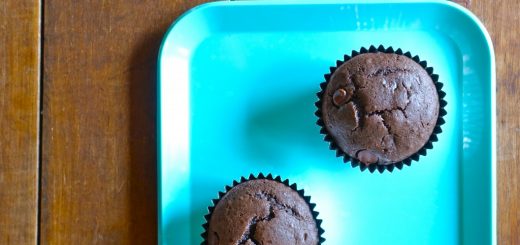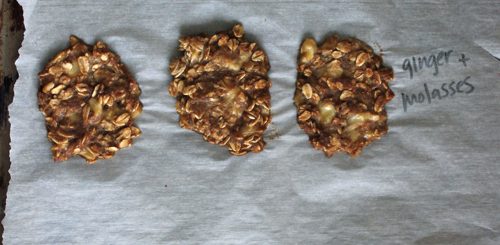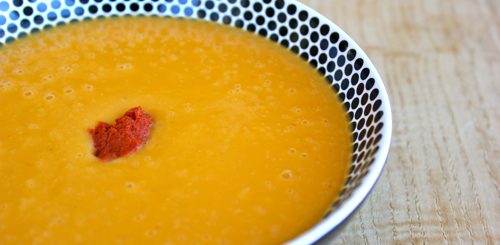{recipe and knowledge} Easy Homemade Hot Cocoa, and How to Eat Chocolate Without Supporting Child Slavery
Lately I’ve been cuckoo for hot cocoa. Maybe it’s the fall chill in the air, maybe it’s the dewy nights, or maybe I just like milky, sugary, chocolate bombs delivered in hot liquid form. No matter the reason, I decided it would be wise to stop spending 3 bucks a day on ho-hum coffee shop cocoa and just make my own. This is cheaper and better, it’s not nearly as cloyingly sweet, and it takes all of about 2 minutes. It’s quick without the Qwik!

I love fat-filled dairy products as much as anyone, but once I go beyond lowfat milk with this recipe, it just gets way too rich for me. However, don’t let that stop you from using whole milk or substituting a little half and half in there- especially if you plan to serve this as a shot-sized dessert or something fancy like that.
And now that you’re all warm and fuzzy thinking about hot cocoa, I have to share something pretty depressing with you about the chocolate industry.
I’m not going to sugar-coat (chocolate-coat?) this: most of the chocolate we eat supports child slavery. This fact makes me reel: how is it possible that something so joyful, so loved, so pleasure-inducing as chocolate can be the product of child slavery? Unfortunately, the majority of it is. I have heard about this for some time now, and I’m ashamed to admit that it took an utterly disturbing BBC documentary to hammer the point home (you can watch sections of the documentary and read more details about chocolate slavery at one of my favorite thoughtful blogs, Rage Against the Minivan.) Hundreds of thousands of West African children, taken forcibly from their parents or sold into servitude, labor on cacao plantations for the raw materials that make the candy we share with our children. How’s that for irony? Companies like Nestle, Hershey’s, and Mars–which by the way, own a whole bunch of other, smaller-seeming companies like Dove and Scharffenberger–are all guilty of using chocolate from these plantations, and claim no responsibility for their actions, saying it’s not their fault since they don’t own the plantations. If you’re a glutton for punishment, you can learn much more about the horrific lives of these cacao-harvesting children at Stop Chocolate Slavery.

So obviously, at this point I feel my chocolate options are limited, and as much as I crave the occasional Dove bar or handful of M&M’s, I can no longer enjoy those things knowing they are the products of child slavery. Luckily, there are many smaller companies making fair trade chocolate that don’t use chocolate from plantations that support child slavery. I like using TCHO chocolate, not only because it tastes great and is made locally in their San Francisco factory, but because they have a transparent supply chain system and have taken a firm “no slavery” stance as part of their mission. Unfortunately, they don’t make unsweetened cocoa powder, which is what I use in this recipe. When I buy cocoa powder, I look for brands that say they’re certified fair trade on the label- like Dagoba (usually cheaper on Amazon than on their site), Sunspire, or Lake Champlain. Whole Foods’ 365 brand of chocolates are also organic and fair trade, but not all Trader Joe’s chocolates are. For a list of where other brands stand, you can check the Stop Chocolate Slavery website.
Recipe: Easy Homemade Hot Cocoa
makes 1 large (me-sized) cup or 2 smaller cups
INGREDIENTS:
- 1 1/2 cups lowfat milk
- 2 Tblsp dark brown sugar
- 2 Tblsp dark unsweetened cocoa powder
METHOD:
- Combine everything in a saucepan and whisk until incorporated. Heat over medium heat until milk starts to bubble. Serve immediately.






Thank you so much for posting this. Although I knew the importance of buying fair-trade chocolate I had always assumed it was to protect the rights of the *adult* workers and not children in slavery.
Eye-opening, powerful…now that I know I can’t forget.
And thank you for linking to “Rage Against the Minivan”, I will definitely be following along there as well!
-Lisa
@Bein Good to Me – Thanks for the comment. Once I learned more, I had to share.
I’m happy to have another fair-trade, non-West-African-sourced chocolate option right here in my backyard – Taza Chocolate, out of Somerville MA. They’re really, really good, too.
My only beef with them is that my friend was trying to get a job there, and they didn’t hire him! FOR SHAME, TAZA. Still delicious.
@Camille – thanks for the tip! I will check out Taza too!
I had no idea about the relationship between chocolate and child slavery. Thank you so much for this post! I will definitely be looking into this and now you have given me a great excuse for not buying that bag of M&Ms at the checkout. Need to go check the organic bakers’ chocolate I bought the other day. BTW – I usually don’t make hot chocolate from scratch, but you do make it look easy and tasty, so once I find the “right” cocoa, I will be making this!
@mjskit You are welcome! Thanks so much for your message. Good luck and enjoy the hot cocoa!
@Healthy Green Kitchen – thank you for your help in spreading the word – really appreciated reading your post.